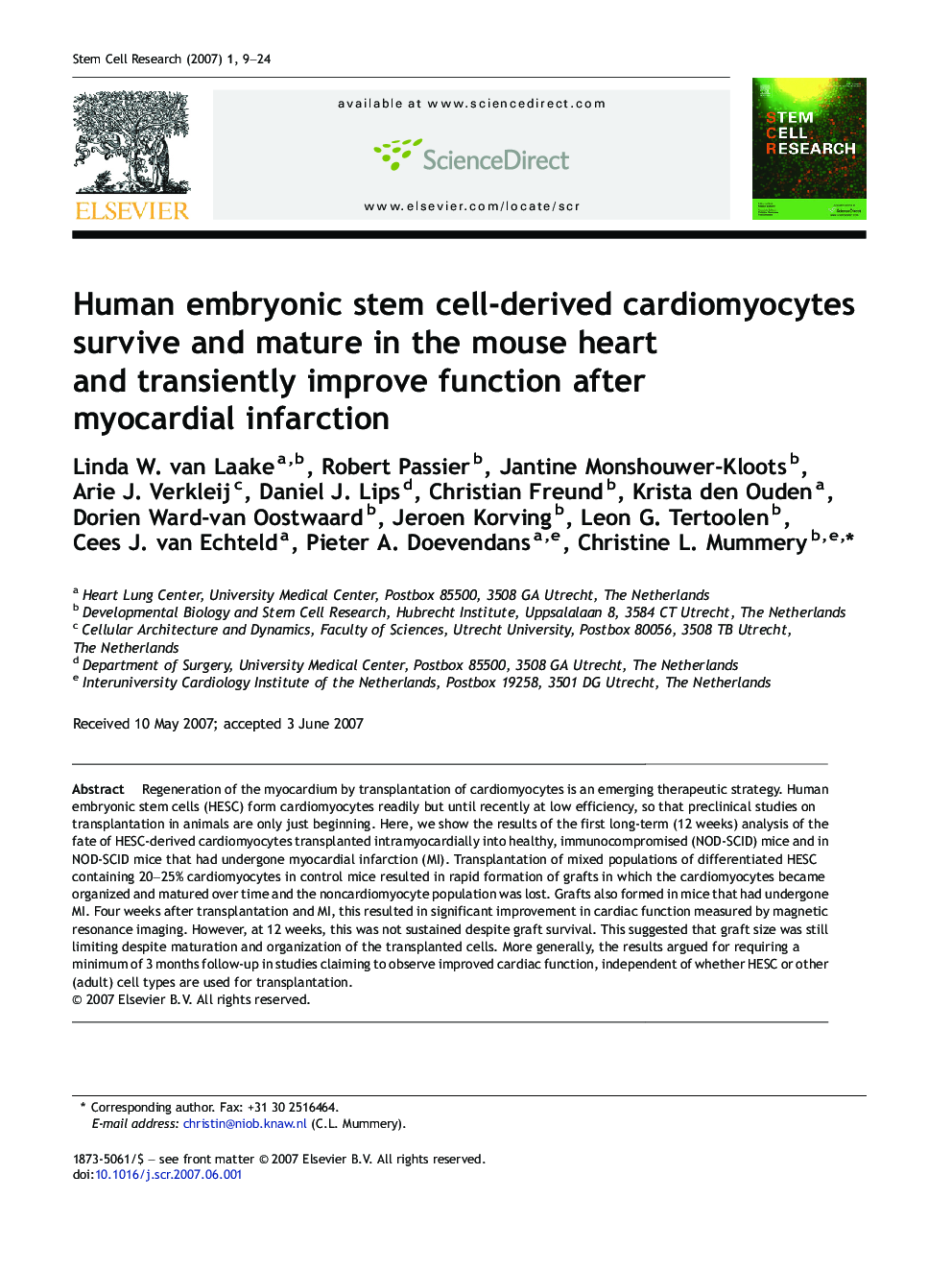| Article ID | Journal | Published Year | Pages | File Type |
|---|---|---|---|---|
| 2094455 | Stem Cell Research | 2007 | 16 Pages |
Regeneration of the myocardium by transplantation of cardiomyocytes is an emerging therapeutic strategy. Human embryonic stem cells (HESC) form cardiomyocytes readily but until recently at low efficiency, so that preclinical studies on transplantation in animals are only just beginning. Here, we show the results of the first long-term (12 weeks) analysis of the fate of HESC-derived cardiomyocytes transplanted intramyocardially into healthy, immunocompromised (NOD-SCID) mice and in NOD-SCID mice that had undergone myocardial infarction (MI). Transplantation of mixed populations of differentiated HESC containing 20–25% cardiomyocytes in control mice resulted in rapid formation of grafts in which the cardiomyocytes became organized and matured over time and the noncardiomyocyte population was lost. Grafts also formed in mice that had undergone MI. Four weeks after transplantation and MI, this resulted in significant improvement in cardiac function measured by magnetic resonance imaging. However, at 12 weeks, this was not sustained despite graft survival. This suggested that graft size was still limiting despite maturation and organization of the transplanted cells. More generally, the results argued for requiring a minimum of 3 months follow-up in studies claiming to observe improved cardiac function, independent of whether HESC or other (adult) cell types are used for transplantation.
